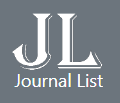Islamic equities Volatility and U.S. Economic Influence: Case of Emerging Market
Abstract
The emerging markets are evidently very attractive to the international investors especially the shariah compliant equity markets, due to their resistant nature against financial crisis. The economic crisis of 2008, which started in United States (U.S.), had devastating impact on the global economy, yet the past studies validate the fact that the U.S. equity investors exert highly significant influence on the price movement of equities in emerging market, hence it is imperative to study the influence of the U.S. economic determinants in the Shariah Compliant Equity Market of Pakistan. The employed methods are the Autoregressive Distributed Lag (ARDL), Granger Causality, Variance Decomposition, and the function of Impulse Response. Results have shown that the Variance Decomposition test outcome suggests that U.S. T-bill and rate of Interest spread has exerted the highest level of influence by 7% in long-run (month 10), secondly the U.S. money supply has influenced the volatility of the KMI 30 index of Pakistan by 3.14% in 10-month period. The rationale behind the U.S. Interest rate volatility is that any fluctuation in federal fund rate reacts inversely to the equity price index in emerging markets. The outcome of Granger Causality test verifies the existence of unidirectional influence of KMI 30 index on economic growth of U.S. because of high level of U.S. investors’ investment interest in emerging markets like Pakistan, keeping other aspects constant. The study reveals that U.S. macroeconomic determinants especially Interest rates both long-run and short-run are crucial to the determination of movement of the Islamic equity returns in emerging market.












